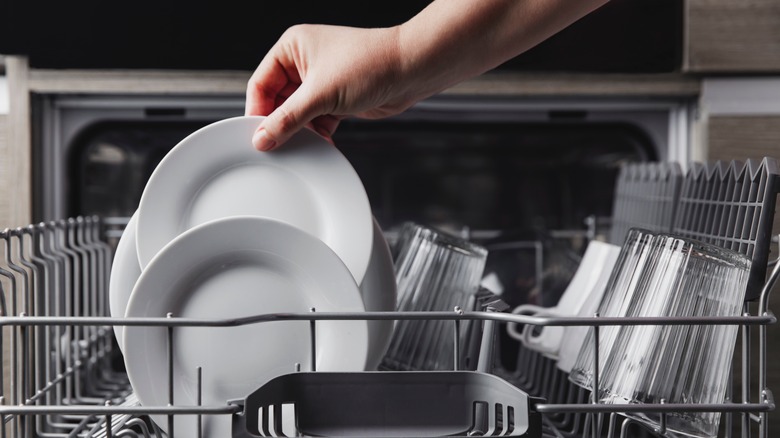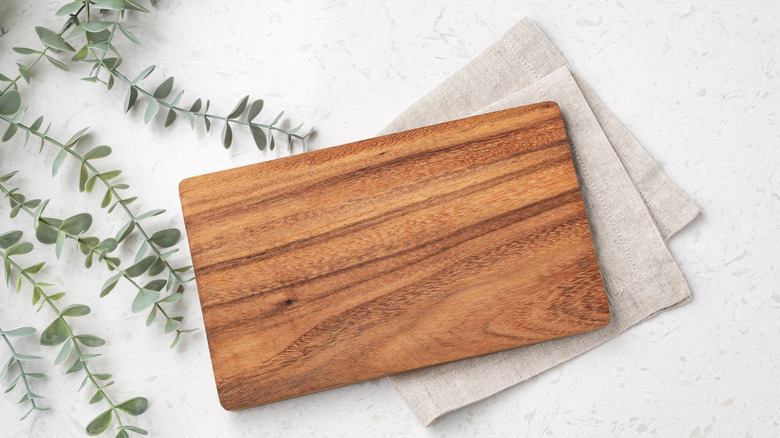Why You Should Think Twice Before Running Your Cutting Boards Through The Dishwasher
Dishwashers are great for saving time and sanitizing cookware, but they can't do it all. Certain items just shouldn't go into your dishwasher. For example, kitchen knives should always be hand-washed, as the blades can be dulled, damaged, or rusted when cleaned in the dishwasher. While some of this damage is caused by them clashing into other kitchen items, such as silverware, in the machine, other problems are caused by the high pressure and heat.
The same rule goes for cutting boards. While it might be convenient to throw a chopping board into the dishwasher at the end of your dinner prep, it can actually damage and warp this kitchen staple. Of course, that doesn't mean you should forgo sanitizing your cutting boards. These surfaces have commonly been found to spread foodborne pathogens in kitchen environments, per the Academy of Nutrition and Dietetics, so it's always important to disinfect them. It just needs to be done properly.
What happens to a cutting board in the dishwasher
Wooden cutting boards, especially, should never go in your dishwasher. Institute of Culinary Education chef Frank Proto told The Strategist that this is because wood fibers swell when they get wet, then shrink when they dry. Interestingly, this is the same process that Serious Eats says makes wooden cutting boards a sanitary choice in the first place. Studies have found that as wood swells and shrinks during hand washing, it traps bacteria inside its fibers, where they are unable to replicate. The problem with dishwashers, though, says Proto, is that they are designed to use cycles of rapid washing and drying. Speeding up these processes can stress boards and cause them to splinter, warp, and dry out.
Some plastic boards might be able to stand up to these temperature changes, but ultra-thin variations are more likely to warp and melt. This is especially true if they're on the bottom rack, where they'll receive the most heat. Overall, though, it's best to skip the dishwasher and wash your cutting boards by hand, no matter the material.
How you should clean your cutting boards
Most of the time, all your cutting board will need to be cleaned is a light scrub with a gentle dish detergent. If you've worked with raw meat and need to thoroughly sanitize the board, use a mixture of bleach or vinegar and water. Let it soak in the solution for at least five minutes to ensure that all of the bacteria have been killed.
Besides properly cleaning your cutting boards, there are other ways to ensure that they stand the test of time. If your wooden board is starting to look worn out, you can revive it with some baking soda, lemon, and a good scrub. You may also want to start wiping your wooden cutting boards down with mineral oil , as they eventually start to dry out from so much exposure to water. A food-safe mineral oil will not only infuse more moisture back into the board, but protect it from future damage, as well.


